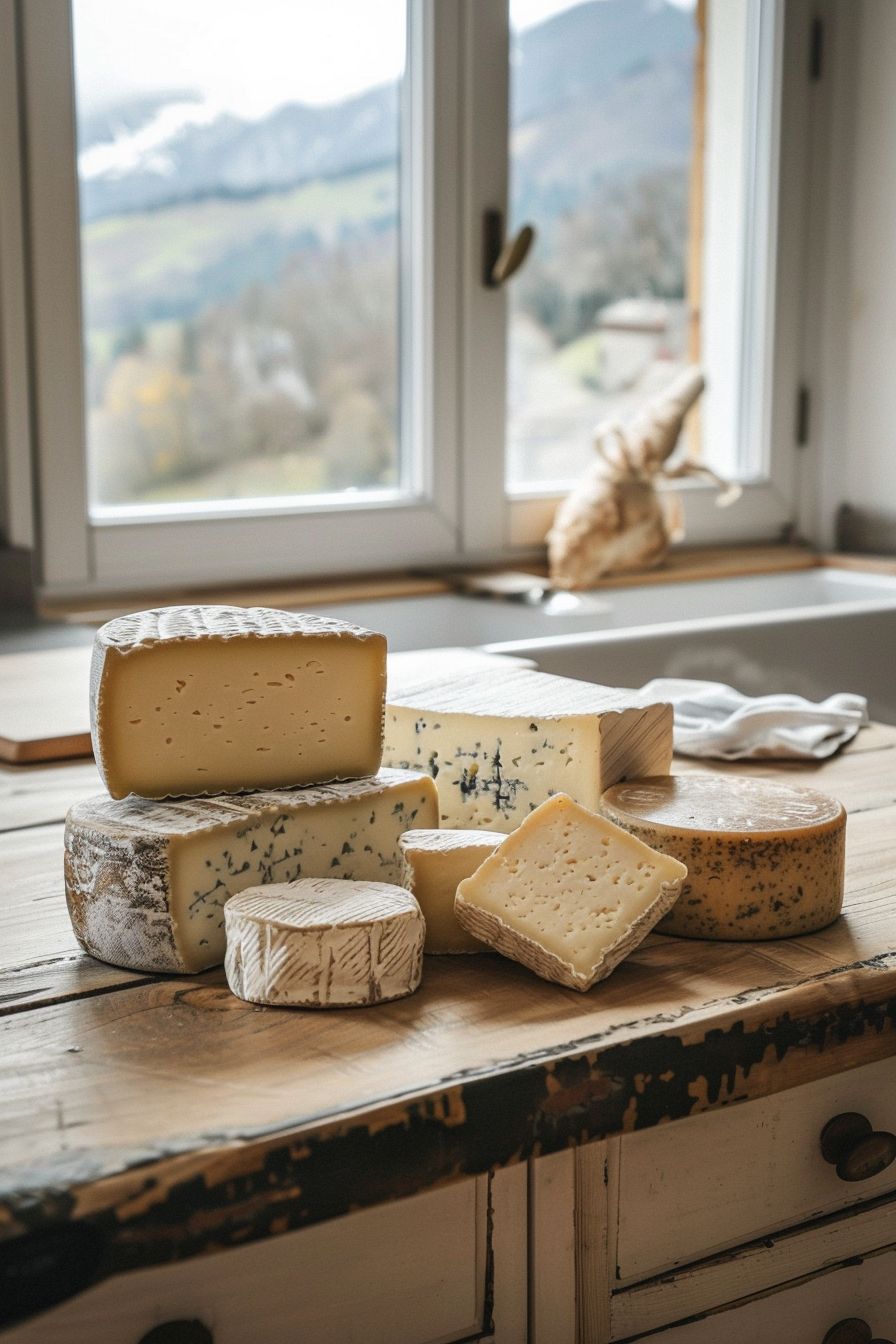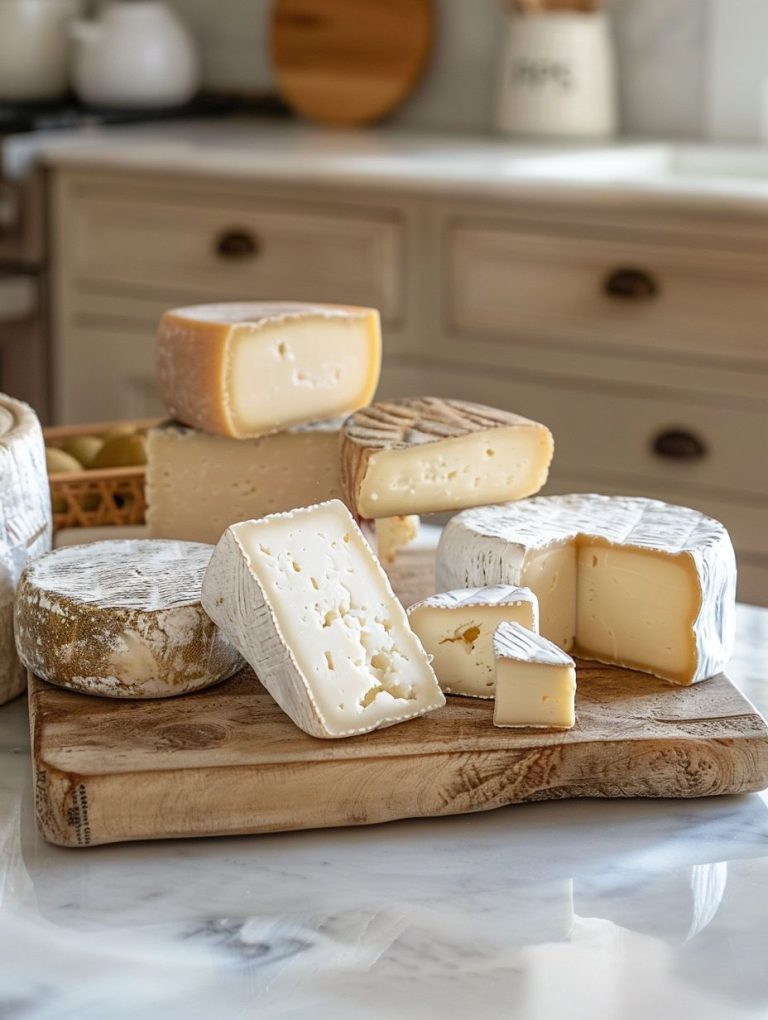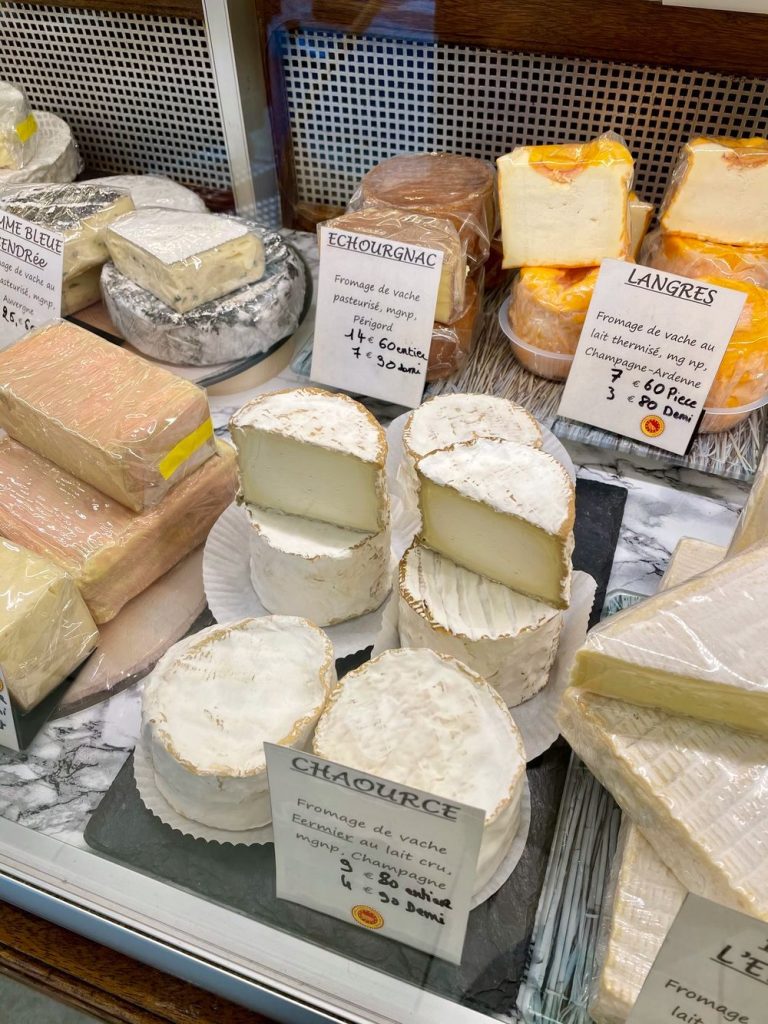5 Best Franche-Comté Region Cheeses You Must Try
We may earn a commission through all links on this website. As an Amazon Associate, we earn from qualifying purchases.Bonjour mes amies, I am thrilled to welcome you back to our little corner of the internet, where we voyage together through the tantalizing world of French cuisine. Today, we’re venturing into the verdant, rolling landscapes of the Franche-Comté region, nestled in the breathtaking eastern part of France, right at the border of Switzerland. A place where time seems to have stopped, preserving the traditions and artisanal craftsmanship of its people, particularly when it comes to fromage – yes, that’s right, cheese!
Franche-Comté is famed for its remarkable array of cheese that embodies the spirit and soul of the region. Imagine these masterpieces, crafted lovingly by cheesemakers using age-old methods, harnessing the subtle flavors of the lush pastures where the region’s dairy herds graze, and maturing them in cool, time-honored cellars. There is something utterly magical about the transformation of these humble ingredients into gourmet marvels that have, for centuries, tantalized the taste buds of gourmands around the world.
So put on your beret, prepare your palate, and join me on a delightful fromage journey. Today, we’ll uncover the most delectable Franche-Comté cheeses, each with a distinctive personality and flavor profile, and how to savor them. Whether you’re a dedicated cheese lover or just a foodie looking to expand your culinary horizons, there’s a place for you at our table. Allons-y!

Comté
Ah, Comté, the pride of Franche-Comté! This is one of France’s most popular and beloved cheeses, known for its versatile, complex flavor and its significant place in the country’s culinary heritage.
Comté is the most consumed AOP (Appellation d’Origine Protégée) cheese in France, with over 64,000 tonnes produced annually!
Comté cheese is a famous and beloved type of cheese that comes from the Jura region of eastern France. It is a semi-hard, unpasteurized cow’s milk cheese that has a firm, smooth texture and a sweet, nutty flavor. The cheese is aged for at least 4 months, and some varieties are aged for up to 24 months, which intensifies the flavor and creates a more crumbly texture.
Comté wheels are quite impressive in size! Each one weighs in between 70 to 90 pounds and measures about 28 inches in diameter.
Comté cheese is made from milk that comes from the Montbéliarde and French Simmental breeds of cows, which graze on the mountain pastures of the Jura region. The cheese is produced using traditional methods, which involve heating the milk, adding rennet to coagulate it, and then pressing and molding the curds.
Comté is not only a star on cheese boards, but its melting quality makes it a perfect ingredient for cooking. Comté cheese is versatile and can be used in a variety of dishes. It can be served on a cheese board, melted on a sandwich, grated over pasta or salads, or used in cooking. It pairs well with white wines, such as Chardonnay or Sauvignon Blanc, as well as with red wines, such as Pinot Noir or Syrah.
Comté cheese is highly regarded by cheese lovers around the world and is often considered one of the finest cheeses produced in France. It is protected by the French AOC (Appellation d’Origine Contrôlée) designation, which ensures that it is made using traditional methods and only from milk produced in the designated region.
Mont d’Or
Mont d’Or cheese, also known as Vacherin du Haut-Doubs, is a soft-ripened cheese that comes from the Jura region of France and Switzerland. It is made from cow’s milk and has a bloomy rind that is often wrapped in a band of spruce bark.
Mont d’Or cheese has a creamy texture and a rich, buttery flavor with notes of hazelnut and woodsy undertones from the spruce bark. It is best enjoyed at room temperature, and it is often served baked in its wooden box, which adds a smoky flavor and helps to hold the cheese’s shape.
Mont d’Or cheese is produced in limited quantities and is only available seasonally from September to May. It is highly prized by cheese lovers for its unique flavor and texture. The cheese pairs well with crusty bread, crackers, and fresh fruit, and it goes well with white wines, such as Chardonnay or Pinot Grigio.
Due to its soft texture and bloomy rind, Mont d’Or cheese is very delicate and should be handled with care. It is best stored in its original packaging and consumed within a few days of purchase.
Vacherin
Vacherin cheese is a soft, creamy cheese that comes from the Jura region of France and Switzerland. It is made from cow’s milk and has a delicate, bloomy rind that is similar to that of Brie or Camembert cheese. The cheese has a mild, buttery flavor with a slightly nutty taste.
Vacherin cheese is available in two varieties: Vacherin Mont d’Or, which is a seasonal cheese that is only produced from September to May, and Vacherin Fribourgeois, which is available year-round. Vacherin Mont d’Or is often served baked in its wooden box, which helps to hold its shape and adds a smoky flavor to the cheese. Vacherin Fribourgeois, on the other hand, is a firmer cheese that can be sliced or grated.
Vacherin cheese is versatile and can be used in a variety of dishes. It can be served on a cheese board, melted on a sandwich or pizza, or used in cooking, such as in quiches or fondues. The cheese pairs well with white wines, such as Chardonnay or Sauvignon Blanc, as well as with red wines, such as Pinot Noir or Beaujolais.
Due to its delicate texture, Vacherin cheese should be handled with care and stored in its original packaging in the refrigerator. It is best consumed within a few days of purchase to ensure optimal flavor and freshness.
Cancoillette
Cancoillotte, this golden, silky delicacy, could be described as the region’s secret treasure, somewhat less known outside of Franche-Comté but a culinary revelation for those who discover it. Cancoillotte is made from metton, a semi-fermented skimmed milk curd, which is melted down and mixed with water, butter, and a touch of garlic or other flavors. The result is a creamy, melt-in-your-mouth, subtly flavored cheese spread that is not only delectable but also impressively low in fat.
Cancoillotte can be enjoyed in a variety of ways. Some people relish it simply spread on a piece of crusty baguette or stirred into piping hot potatoes. Others love to include it as a finishing touch in hearty dishes like the regional favorite, “Pommes de Terre à la Cancoillotte,” where it adds a rich, comforting note. Whichever way you choose to indulge in it, Cancoillotte promises an unforgettable smooth and savory experience.
Morbier
Now let’s turn our attention to the crown jewel of Franche-Comté cheese, Morbier. This semi-soft cheese, easily recognized by its distinctive layer of edible vegetable ash running through the middle, is a testament to the region’s rich cheesemaking history. It originated from the cheesemakers’ ingenious tradition of using leftover curd from Comté production, layering the morning and evening milk curd with ash to separate and preserve them, hence its unique appearance.
Morbier offers a complex flavor profile. The cheese is supple and creamy, with a slight crumble. The taste can be described as fruity, with a slight tang, and sometimes a hint of nuts. Aromas from the grass and flowers on which the cows grazed also make their way into this cheese, offering subtle notes of fresh hay and a pleasingly earthy undertone. Its intriguing taste and texture make it a versatile cheese that can be used in a myriad of ways – whether that’s slicing it into a fresh salad, melting it into a gratin, or simply enjoying it with a glass of local Jura wine.
Like all artisanal cheeses, these franche-comté cheeses are best enjoyed at room temperature to fully appreciate their nuanced flavors. I encourage you to explore these delectable offerings from Franche-Comté. One bite and you’ll understand why these French regional cheeses have held their place in the hearts of the locals for centuries. Happy tasting!





